Installations for Quebec garden festival to include stone pavilion and suspended cone
A shadowy room with gabion walls and a suspended canopy made of wooden slats are among the winners of a juried competition to design installations for this year's International Garden Festival, in Quebec, Canada.
Five winning concepts have been selected for the 17th edition of the International Garden Festival, which is held each year in the Reford Gardens in Grand-Métis.
Le Caveaum, or The Cave, is designed by Christian Poules, an architect and landscape architect from Basel, Switzerland. His design features a four-sided room framed by steel frames filled with stones, known as gabions.
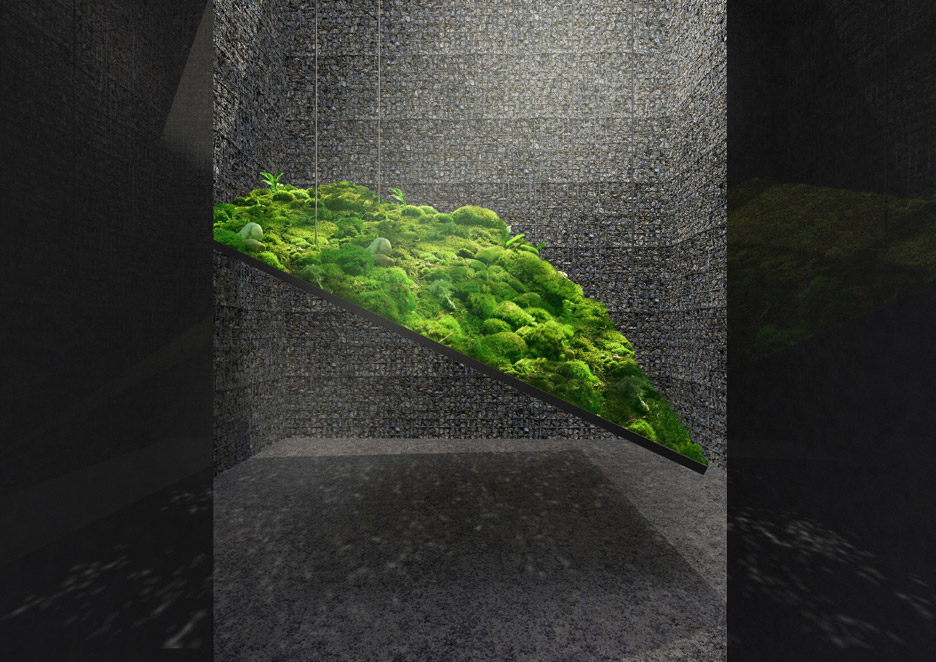
Natural light will slip through rocks in the gabion walls and create shadows within the rectilinear volume. A triangular platform covered with moss and ferns will be suspended from above.
"It is a room for reflection. It is a room for dreamers," said the designer. "Just as the plan levitates before us, we are held in the balance of the stone and life itself."
Cyclops is a proposal by Craig Chapple, an architect and artist in Phoenix, Arizona, who is focused on patterns, textures and process.
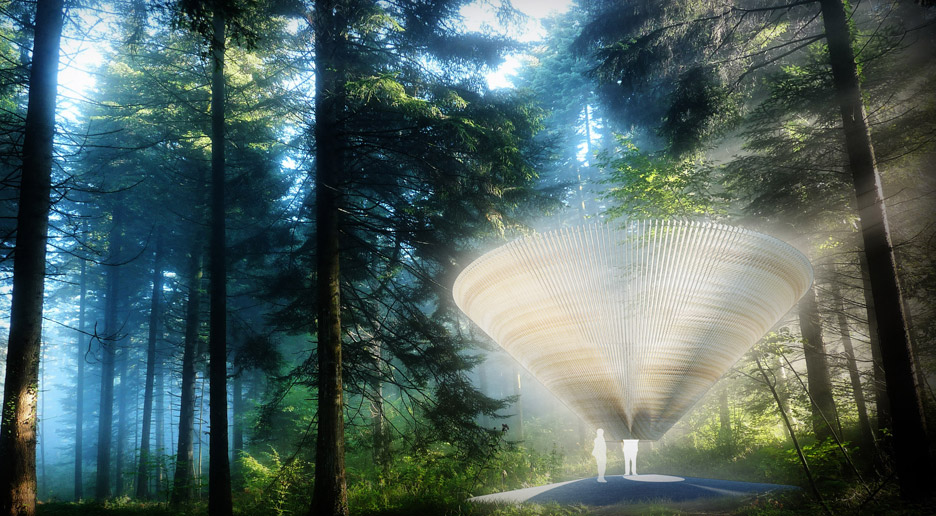
Intended to serve as both a singular object and a framing device for the landscape, Chapple's installation will consist of more than 250 wooden boards arranged in a concentric circle.
The boards – each measuring eight metres in length – will be attached to a steel ring suspended from surrounding trees by stainless steel cables. Viewers will be able to stand at the base of the inverted cone.
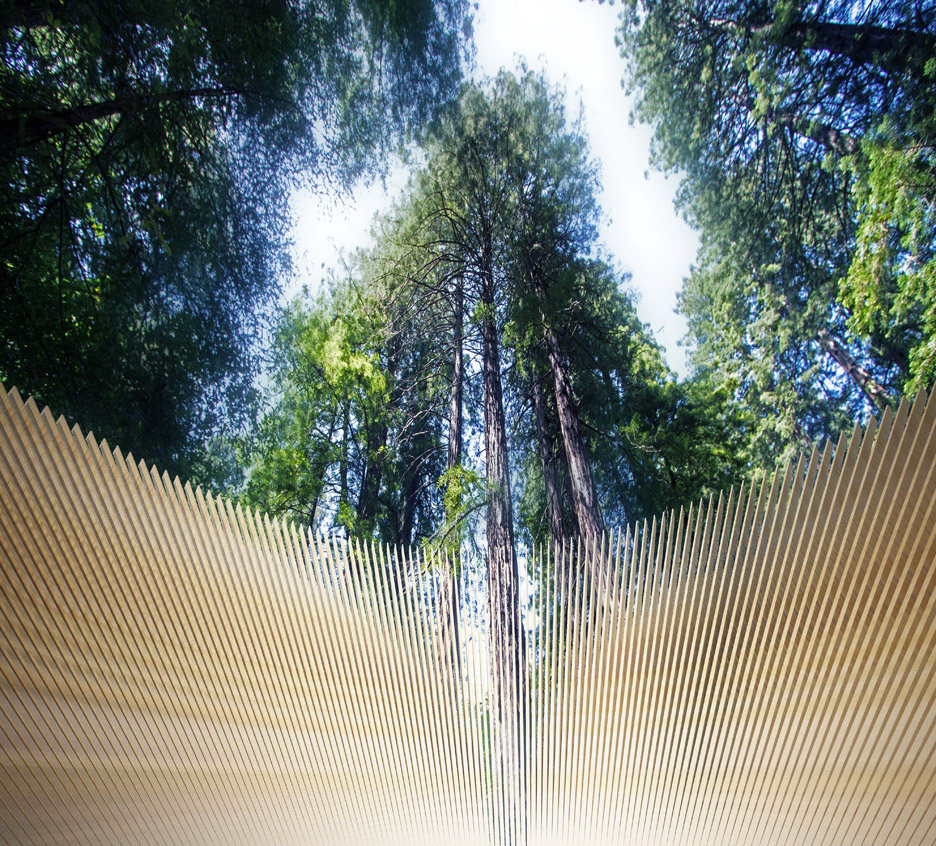
"Cyclops is held in a tenuous balance with the environment that provides for it," the architect said. "Viewers find themselves playing a central role in the work as they rediscover their relationship to the energy in their environment."
The team of Romy Brosseau, Rosemarie Faille-Faubert and Émilie Gagné-Loranger – three intern architects from Quebec City – designed the installation titled La Maison de Jacques, or Jack's House. It is named after the children's story, Jack and the Beanstalk.
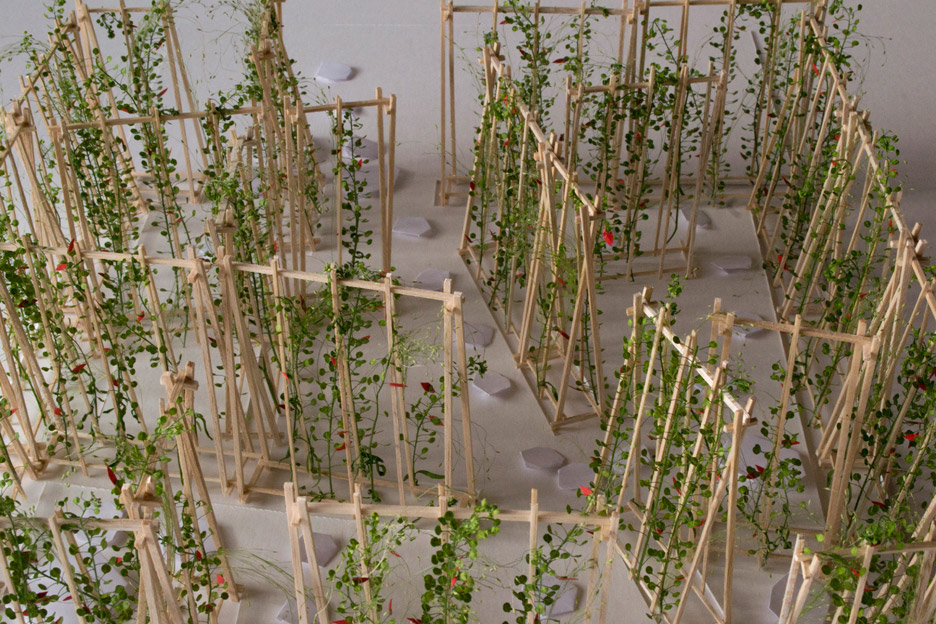
The scheme features stepping stones leading into a square volume containing trellises laced with bean vines. Seedlings will be planted in May, and the plants are expected to reach more than three metres in height.
"Their clumps of red flowers will be in bloom by the end of July and then the beans will form to bring a taste of goodness to everyone," said the designers.
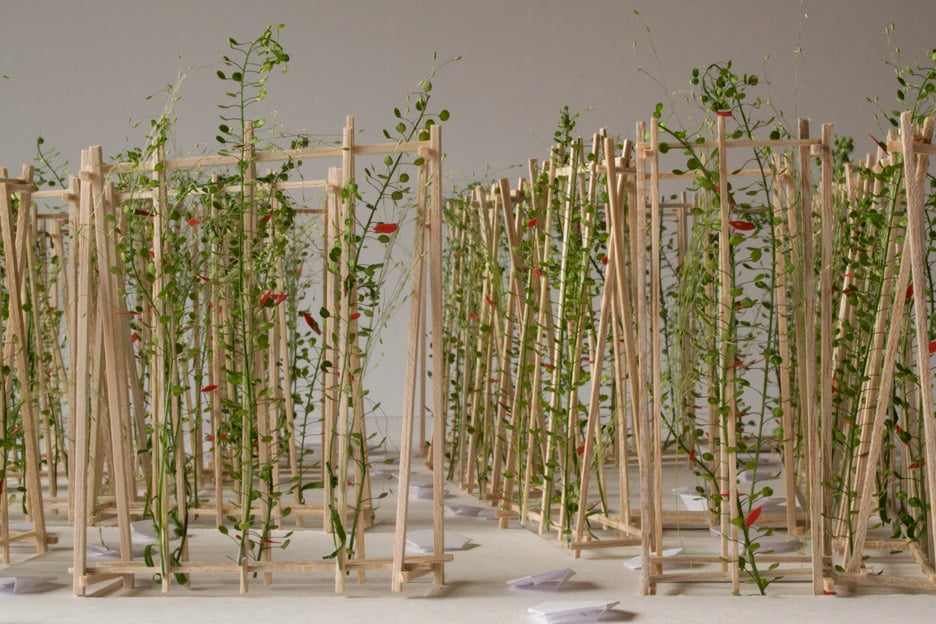
Inside the structure, the plants will create a maze-like experience for visitors. "The walls divide the space into a series of small hidden gardens, singular in their proportions," said the designers.
SRCW, a Winnipeg-based studio led by architect Sean Redford and designer Chris Wiebe, created the entry called TiiLT.
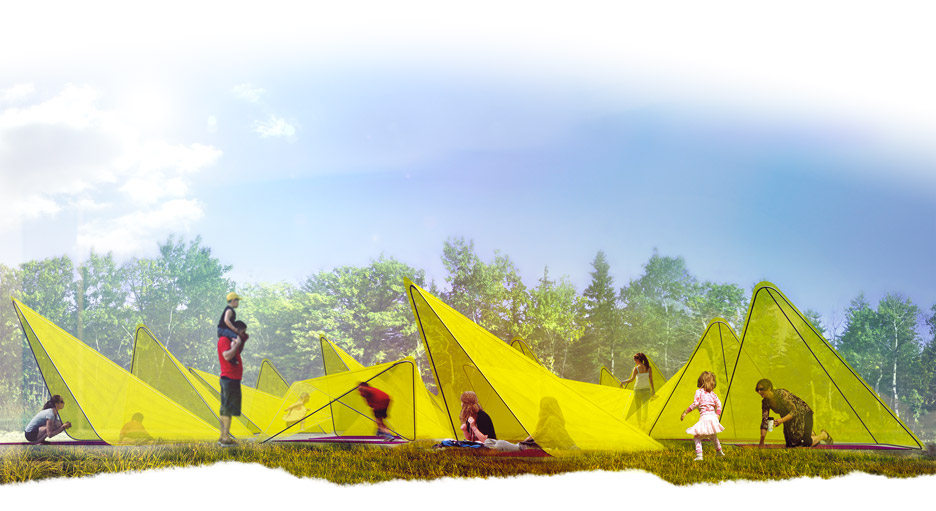
It features a series of bright yellow tents that can change orientation depending up the position of the sun. The "toggling movement" is intended to evoke a school of fish or a flock of birds.
"Finding roots in the formal geometries of the labyrinth and the many informal camping traditions in the Canadian landscape, TiiLT is a transformable and inhabitable place for visitors to act, or to idle, however they may be inclined," the designers said.
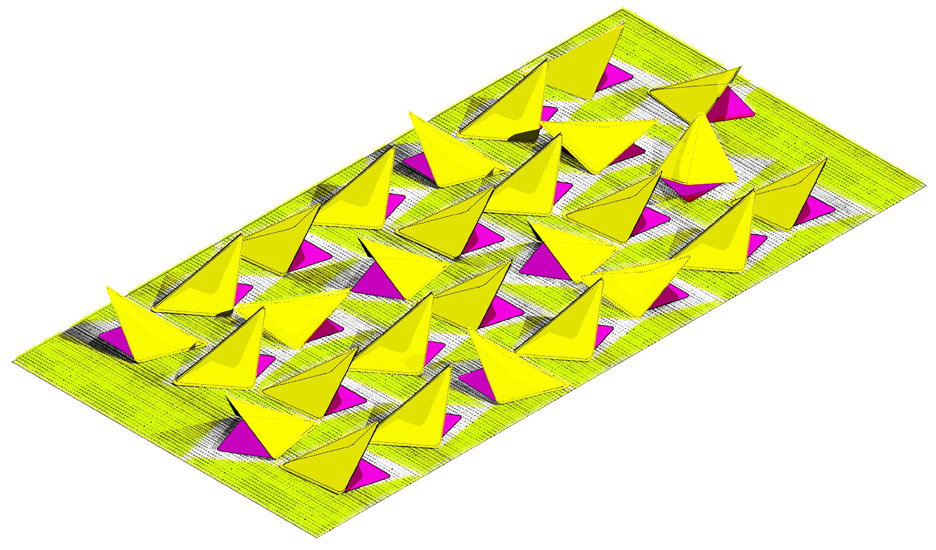
Carbone was designed by the French landscape design studio Coache Lacaille Paysagistes. Founded in 2013 in the town of Nantes, the studio consists of Maxime Coache, Victor Lacaille and Luc Dallanora.
Their scheme features a fallen tree trunk, cut into a series of five "modules" that refer to the process of furniture fabrication.
"This installation evokes the cycle of production as a parallel to the carbon cycle," said the design team. "The garden landscaped or the landscape gardened. Regenerating the forest and sowing where we have harvested brings nature back to life. Transmit the love of landscape to those who will outlive us."
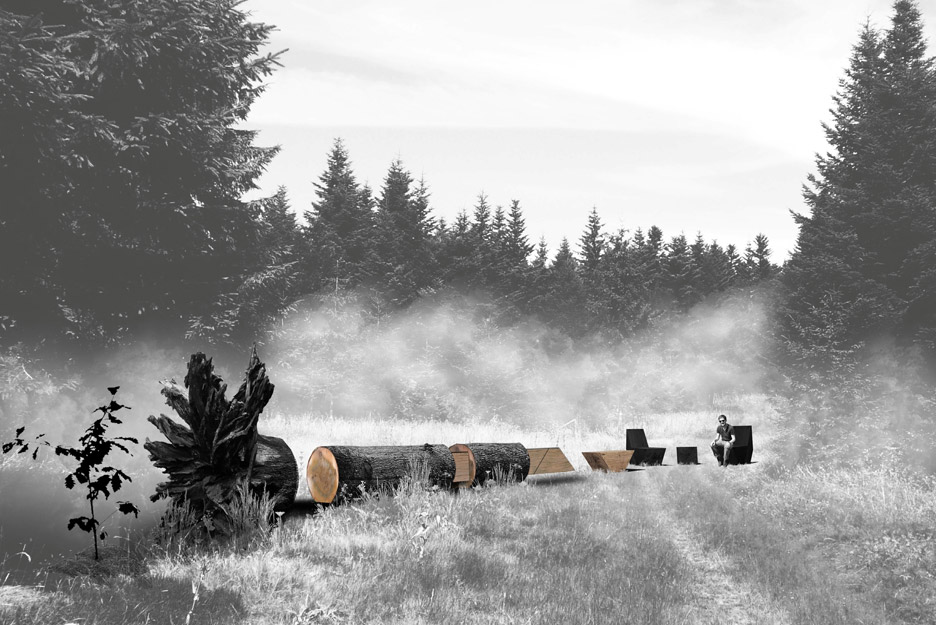
The jury also awarded a special mention to a scheme called Dress Up! which was conceived by a team of architects and artists from Seoul, Beijing and New York.
The International Garden Festival is held each year in the Reford Gardens in Grand-Métis, Quebec. The event presents temporary structures by architects, landscape architects, designers and artists from around the globe.
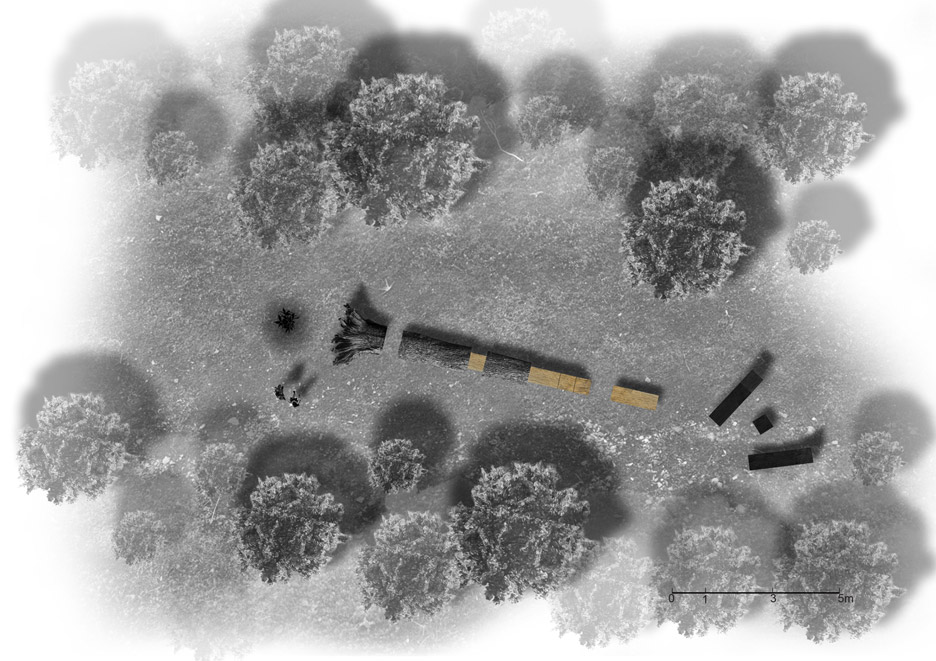
The International Garden Festival presents temporary structures by architects, landscape architects, designers and artists from around the globe, and will open on 23 June 2016 and continue through 2 October 2016.
This year's five winning concepts were chosen from 203 entrants, representing a total of 31 countries.
The installations are erected next to a historic garden created in the 1920s by Elsie Reford, a pioneering Canadian horticulturalist.
Past installations include a large dish of water by Spanish architecture group Citylaboratory and stacks of decaying books by Rodney LaTourelle and Thilo Folkerts. Last year, designers from the Canadian firm Groupe A/Annexe U erected an orange pavilion within a shallow pool that required visitors to wear rain boots.